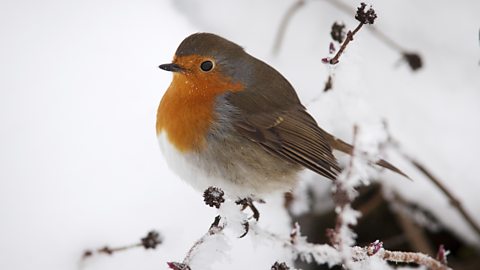Linnaean system of classification
Living organisms are classified into groups depending on their characteristics. This system was developed in the 18th century by Carl Linnaeus.
The classification of species allows the subdivision of living organisms into smaller and more specialised groups.
Kingdoms
The first division of living things in the classification system is to put them into one of five kingdoms.
The five kingdoms are:
- animals (all multicellular animals)
- plants (all green plants)
- fungi (moulds, mushrooms, yeast)
- protists (Amoeba, Chlorella and Plasmodium)
- prokaryotes (bacteria, blue-green algae)
Further divisions
Living things can then be ranked according to:
- phylumA taxonomic rank between kingdom and class (the plural is phyla). The arthropods, for example, are a phylum.
- class
- order
- family
- genusA rank in classification below family and above species.
- species
Phyla follow kingdoms and have many different organisms. The animal kingdom includes the three examples below:
- chordata, which have backbones
- arthropod, which have jointed legs and an exoskeleton
- annelids, which are segmented worms
Class is an additional sub-division, which, for example, results in the chordata phylum being divided into:
- mammals
- birds
- amphibians
- fish
- reptiles
Order follows class and, as an example, mammals can be further sub-divided into a variety of different groups such as:
- carnivores
- primates
Orders are broken down into families. Here are a few examples of families that carnivores can be divided into:
- canidae â dogs
- felidae â cats
Genus follows on from family. The felidae family can be sub-divided into four genus examples:
- acinonyx â cheetah
- panthera â lion and tiger
- neofelis â clouded leopard
- felis â domestic cats
Species is the final classification stage, and the genus panthera can be divided into:
- Panthera leo (Lion)
- Panthera tigris (Tiger)
As an example, the complete breakdown of the classification of lions:
- kingdom - animal
- phylum - vertebrate
- class - mammal
- order - carnivore
- family - felidae
- genus - panthera
- species - leo
There are many ways to remember this order, for example using the mnemonic:
kids prefer candy over fresh green salad

The binomialHaving two parts to a name. In the binomial system of classification, each organism is named for its genus then its species. system of naming species uses Latin words. Each name has two parts, the genus and the species. Bi- means two, for example a bicycle has two wheels. Nom means name. Therefore binomial means âtwo nameâ.
Human beings belong to the genus Homo, and our species is sapiens - so the scientific binomial name is Homo sapiens.
The binomial system is important because it allows scientists to accurately identify individual species across the world without needing to know the scientistâs home language. The grouping of families was added to allow the large number of new species to be included in this system. Linnaeusâ original ideas have been adapted, but continue to be accepted and as new species are identified they can be fitted into the current classification system.
Originally, Linnaeus couldnât distinguish between different types of organisms such as algae, lichens, fungi, mosses and ferns. The inability to examine such organisms in detail made classifying these organisms as different species difficult at that time.
As more scientific equipment - such as microscopes with higher magnification - became available, it allowed scientists to examine organisms in more detail and note important features, such as the identification of sex organs. This allowed more divisions in the classification system to be created. The advancement of technology further helped to develop Linnaeusâ classification system.
Listen to a podcast about classification with Dr Alex Lathbridge.
Listen to the full series on ±«Óătv Sounds.
Listen to a podcast about classification with Dr Alex Lathbridge.